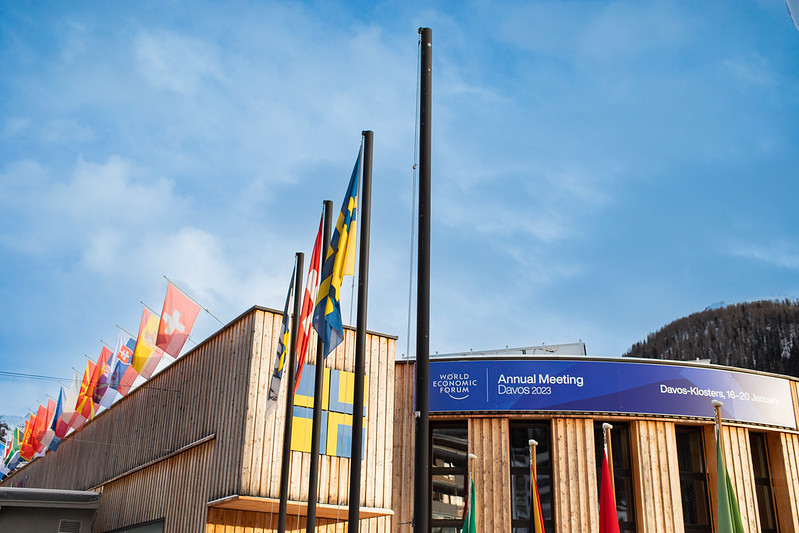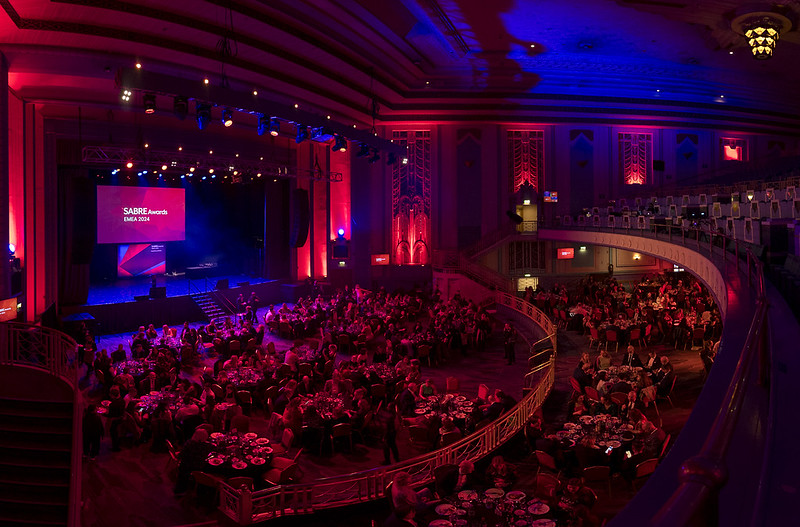PRovoke Media 27 Jan 2021 // 10:13AM GMT
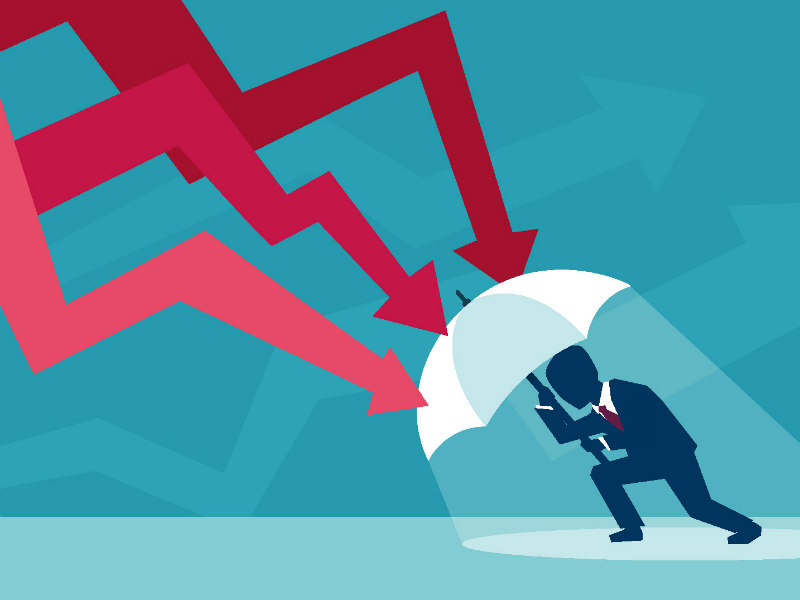
Part One: 'Election fraud', AstraZeneca, 5G, Rio Tinto, Huawei, McKinsey and Tyson Foods
8. TikTok’s territories are tested
In August last year, former US president Donald Trump signed one of his many executive orders, this time to ban Chinese-owned TikTok from operating in the US within 45 days. At the time, Microsoft was in talks to buy TikTok, which has more than 80 million monthly active users in the US.
Soon after, TikTok was criticised for the lack of effective internal messaging that accompanied the company's dramatic experiences. "The vacuum of up-to-date internal information augmented the perception, both internal and external, that TikTok and [parent company] ByteDance have trouble faring the mounting external pressure,” wrote PingWest.
TikTok’s US general manager Vanessa Pappas posted a direct message to fans, stating categorically: “We’re not going anywhere”. She went on to push the brand’s message that it is investing in the US, and creating jobs, at a time when the economy was struggling.
The CEO of TikTok, Kevin Mayer, also stood his ground: “We are not political, we do not accept political advertising and have no agenda - our only objective is to remain a vibrant, dynamic platform for everyone to enjoy. TikTok has become the latest target, but we are not the enemy.”
Kate Hartley, co-founder of social media crisis simulation company Polpeo, says TikTok’s response was a gamble that paid off: “It was hard to separate America’s threat to ban TikTok from Trump’s bluster – to know what was genuine concern and what was political posturing. And that was really at the heart of TikTok’s response. It encouraged its users to defend the app, which they did, in their millions. It was a bullish message, and fans rallied.”
One of the security concerns about TikTok expressed by Trump’s government was that if the Chinese government could access US data, that data could be used to spread disinformation. “In a lovely irony, TikTok banned videos posted by users of Trump’s speeches to his supporters ahead of the Capitol riots, as they went against the app’s misinformation policy,” says Hartley. “But despite a rash of alternative apps being downloaded, and influencers realising the dangers of putting all their eggs in one basket, TikTok has (so far) kept its hold in the US. Unlike Trump.”
Even so, the crisis has taken quite a toll on TikTok, with Mayer stepping down and ByteDance finding itself caught up in the geopolitical crosshairs between the US and China.
Elsewhere, TikTok’s ban by the Indian government – temporary in June and permanent as of this week – is slightly different, says Hartley: “India has a long history of protectionist policies, promoting Indian-made products and services over imported ones. It also has a long-running border dispute with China. TikTok was one of many Chinese casualties in India.” But again, fans of the app were left devastated: “They saw this as a political move: TikTok was seen by many as a way as an escape from repressive government policy in India.”
Genuine questions about ByteDance's security policies persist, but Hartley says in withdrawing from Hong Kong in July after the introduction of the territory’s punitive new national security law, the platform “sent a clear message: it aligns itself with the big Silicon Valley giants, rather than with Chinese-imposed data law.”
This association of TikTok with freedom movements, combined with its links with anti-establishment youth – witness the platform being used to mobilise fans of Korean pop, aka K-pop, to sign up for Trump’s rally in Tulsa last summer and then not turn up, leaving a near-empty arena – is likely to keep its communications teams globally on their toes in the year to come. — MPS
9. Volkswagen pulls racist Instagram ads
Just as its diesel emissions scandal that started in 2015 finally started to fade away, Volkswagen found itself in warmwasser again last spring, when the German car manufacturer was forced to pull a series of social media adverts and apologise, after complaints that the content was racist.
The Instagram, Facebook and Twitter content, to promote the VW Golf 8, was set in Buenos Aires and showed a small dark-skinned man apparently being moved around by a white woman's giant hands, before she laughs and flicks him away from a yellow VW Golf. Not only that, but he is flicked into a café called Petit Colon, which translates from French to German as “little settler” or “little colonist”.
The creative, which was apparently simply meant to mimic social media posts playing with the idea of scale, managed to – astonishingly – offend in not one, not two, but three ways: it was also pointed out by social media users that when the German slogan “Der Neue Golf” (“The New Golf”) appears in the ad, the letters which fade in first spell “neger”, which can be used as the German equivalent of the n-word.
VW’s crisis comms were again tested: it first responded to criticism on Instagram by saying it was “surprised and shocked that our Instagram story could be so misunderstood”. However, it later issued a statement saying: "We fully understand the disgust and anger in response to the video. It is quite clear that this video is wrong and distasteful. We firmly distance ourselves from the video and apologise sincerely.”
Board member Jürgen Stackmann and group head of diversity Elke Heitmüller also responded quickly on VW’s social channels: “We understand the public outrage at this, because we’re horrified too. It is an insult to every decent person. We’re ashamed of it and cannot explain how it came about. We apologise in particular to those who feel personally hurt by the racist content.”
The firm said that given its own well-known history – the firm was set up by the Nazi party before the Second World War to make “the people’s car” – “Volkswagen has positioned itself as a company that does not tolerate any form of racism, xenophobia or discrimination” and this made it “all the more frustrating that we have made this mistake.” VW added that it would “investigate how this could have happened and draw the necessary consequences.”
At business strategy and communications agency BoldT, which has offices in three German cities, partner Steve Earl says VW’s handling of the crisis was effective, and this is borne out by sentiment data: “Volkswagen’s response to the racist Instagram content was a textbook example of how to manage a crisis of this kind, with a full and rapid apology. Our Riskr risk analysis platform shows that the company experienced a huge drop in public sentiment last May around the time that the content was posted, before regaining ground.”
However, he warns: “The fact that the root of the crisis was a paid Instagram campaign is a warning to any company releasing content frequently – reputation risk management requires rigour so that it’s fully understood and drives scrutiny over each piece of content, with eyes wide open over those risks and an informed approach to determining what is appropriate.” — MPS
10. Ebay's stalking and harassment
2020 was the year of absurdly over-the-top headlines that, if scripted in a movie, would leave audiences yelling, “that’s not even realistic.” And that’s why the Ebay stalking and intimidation campaign was the apropos scandal to break alongside a botched effort to stop a global pandemic and the US presidency spiraling into an authoritarian farce.
The bloody pig mask and fetus, live cockroaches and spiders, the invitation for swingers on Craigslist to knock on the door of a posted address — all directed at Ina and David Steiner, a Boston-area couple who run EcommerceBytes. The blog draws attention to issues sellers face on eBay, along with other news about the company, including executive compensation.
“The cyberstalking campaign by a half dozen Ebay employees is an important cautionary tale for all corporations, their executives, security and communications teams,” says crisis expert Sam Singer. “It is a tale of how easily a handful of people within an organization can dramatically and negatively impact its reputation.”
But in this case, “the handful of people” included the former CEO Devin Wenig who hated the blog so much that in April 2019, he texted eBay’s former CCO Steve Wymer: "We are going to crush this lady” directed at Ina Steiner, The New York Times reported. It’s also been reported that Wening and Wymer secured pricey severance packages upon their disgraced exits from the company.
“It is also an important example of corporate ‘cult-like’ behavior and actions that should be carefully monitored by HR and business leaders,” Singer adds. “Anytime the dynamic in a corporation becomes ‘us’ (insiders) vs. ‘them’ (critics) it should be seen as a warning flare to evaluate the situation.”
The New York Times aptly called the details of the stalking campaign “ghastly.” Wenig’s chilling obsession with harassing the Steiners and “taking her down” is terrifying enough — but the eagerness at which a handful employees, including Wymer, complied is just as appalling.
“Ebay’s then-CEO created a culture where inflammatory words from powerful people incited bad behavior,” says Robin Kim, Ruder Finn’s global head of innovation and technology. “This doesn’t excuse those who took part in the harassment, but deeper investigations also revealed an environment where contract workers were made to feel insecure, self-doubting and uncertain, and creating conditions that can lead to disturbing acts of aggression. Loyalty became the enemy of workplace ethics rather than a force for good.”
The industry tends to gush over the top-tier business media but this scandal is a reminder of the critical role that trade media can play with key stakeholders, says Bulleit Group CEO Kyle Arteaga. He says eBay should consider breaking big stories via the trade pubs, in particular eCommerceBytes. “They should also include what they are doing with trades in employee communications so that employees understand the reparations taking place,” he adds. — AaS
11. Wells Fargo's woes continue
It has been four years since the fraud scandal at Wells Fargo first appeared in our crisis review article, and the fact that the aftershocks continued to roil the financial services giant in 2020 shows now only how chronic crises can interfere with a company’s business for years, but also that the problems at Wells Fargo were not the result of an isolated incident but rather a sickness deep in the corporate culture.
Actually, it was in 2013 that the Los Angeles Times first reported how “the relentless pressure to sell” at the bank “has battered employee morale and led to ethical breaches, customer complaints and labor lawsuits, a Times investigation has found. To meet quotas, employees have opened unneeded accounts for customers, ordered credit cards without customers’ permission and forged client signatures on paperwork. Some employees begged family members to open ghost accounts.”
In 2016, after the company’s “few bad apples” defense fell apart—it claimed to have fired 5,000 junior employees while absolving its senior management of any wrongdoing—the Consumer Financial Protection Bureau issued a record fine, and a month later CEO John Stumpf resigned in disgrace after Senator Elizabeth Warren castigated him for “gutless leadership” after Congressional testimony did not go well.
In January of 2020, Treasury Department officials issued a report on the accounts scandal, arguing that the bank’s business model “imposed intentionally unreasonable sales goals and unreasonable pressure on its employees to meet those goals and fostered an atmosphere that perpetuated improper and illegal conduct.”
And that wasn’t the only problem facing that company. The cities of Sacramento, Philadelphia, Miami, and Oakland have all sued the bank for allegedly giving unfavorable mortgage terms to Black and Latino homebuyers.
In the summer, after Reuters revealed comments by Wells Fargo President and CEO Charlie Scharf about the company’s diversity issues during a Zoom call this summer—apparently there aren’t enough qualified Black people for the company to diversify successfully—Washington Post opinions editor Karen Attiah wrote that “it would be hard to find a cleaner example of self-perpetuating systemic racism in action.”
Business reporter and author Bethany McLean diagnosed the cultural issues: “They couldn’t get over their self-righteous horror that this was happening to them. In their view the rest of the world was wrong, because they were Wells Fargo and they were perfect, and of course they didn’t mean to do anything like this, and this was all an accident, and why was the press after them? It literally could not understand why people were so upset. I think that sanctimoniousness just extended throughout the executive suite into the very blood and bones of the company.”
The company has taken steps to address the public relations dimensions of the crisis—it named Barri Rafferty to head corporate communications and hired former Obama chief of staff William Daley to lead public affairs—but the cultural issues can only be addressed at the very top of the organization. — PH
12. Amazon worker safety
Amazon’s workplace safety record has been under siege even before the pandemic hit. In December 2019, an alarming story in The Atlantic featured the headline: Ruthless Quotas at Amazon Are Maiming Employees. Then, of course, the pandemic took hold and Amazon’s warehouse workers became, after healthcare professionals, the epitome of essential workers delivering food and necessities to people too frightened to leave their homes as Covid-19 enveloped the world.
In March, as the virus surged, Amazon called its employees “heroes fighting for their communities” and CEO Jeff Bezos commended workers with the assurance that “your efforts are being noticed at the highest levels of government.” But the company’s actions told a different story. Numerous reports emerged around the same time, detailing the terrifying ordeals that Amazon’s workers were facing: crowded facilities, unpaid leave, limited PPE. The situation became so dire that California opened an investigation — which Amazon has not been cooperative with — into the coronavirus safety measures at warehouses in the state. The company said it has implemented more than 150 process updates inside its warehouses — yet, by May already eight Covid-19 deaths were linked to the company’s warehouses. Meanwhile, the company has also enjoyed record-breaking revenue and profits.
“Over the last few years, as public opinion has changed about the FAANG companies – the major disruptive companies such as Facebook, Netflix, Apple, Amazon, Microsoft and a handful of others, from candidates for Mt. Rushmore to targets of citizen outrage, Amazon has largely escaped most significant criticism,” says crisis expert Richard Levick. “ The labor and safety issues of 2020 are no different. On labor unrest and unionization, Google gets most of the attention. The worker safety issue is critical and a brewing one, but is a long term issue that hasn’t yet reached a breaking point.”
He adds, too many people are simply too dependent on Amazon, especially during a pandemic, for the scandals to hurt the business, for now. But without repairing the damage from 2020, Amazon’s good fortunes could reverse with time.
“My advice is for Bezos and other leaders at Amazon to open up their EQ toolbox to emphasize and relate to their workers and customers in a much, much deeper way,” says Mike Paul, president of Reputation Doctor. “The solution is less about head work, or tech work and much more about heart work to hold on to Amazon’s greatest asset: its employees. That includes caring for employees like family, especially those who lost a loved one and those suffering from Covid-19 today and in the future.” — AaS
13. Sherwin-Williams' self-inflicted social media failure
It clearly was not the sheer size and scale of the crisis at Sherwin Williams that landed the company on Bloomberg’s list of the five worst PR disasters of 2020. Compared to the challenges facing voting machine companies or vaccine manufacturers, the social media brouhaha that ensued after the paint company fired a Tik-Tok star whose unauthorized social media account was far better than anything the company’s official sources could produce.
Instead, what made this corporate injury stand out was the fact that it was completely self-inflicted, and seemed to suggest a corporate culture that was stuffy, humorless, and completely out-of-touch with modern marketing.
Tony Piloseno was a college student who had built up a following of more than 1.2 million on his paint-mixing TikTok channel (@tonesterpaints) while working a part-time job at his local Shewin Williams. Corporate personnel investigated his social media account, and fired him after determining he was making "these videos during [his] working hours" and with company equipment.
The company accused him of “gross misconduct,”including the offenses of "wasting properties [and] facilities," and "seriously embarrass[ing] the Company or its products.”
On an intriguing modern twist on the old adage that companies should “never pick a fight with anyone who buys ink by the barrel,” Sherwin Williams soon found out that in the 21st century, there’s no way to win an argument with a popular social media star, particularly one who uses paint by the bucket. Especially since Piloseno was utterly charming in explaining his actions: "I loved the job immediately," he said. "I love how colors blend together, what goes with what... It’s hard to explain, but I really enjoy mixing paint. I like showing what stuff it can do."
The story had a happy ending for the TikTok star: rival Florida Pains hired him to develop his own line of products. Sherwin Williams, meanwhile, was left to rue a missed opportunity and to deal with the social media backlash. — PH









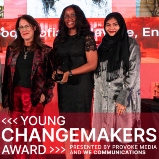












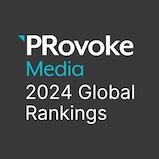












.jpg)












